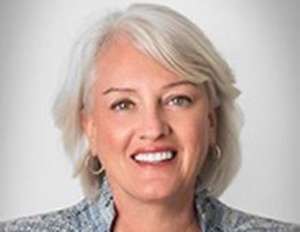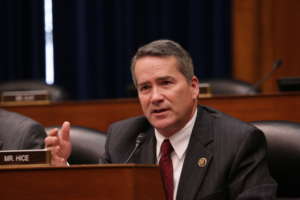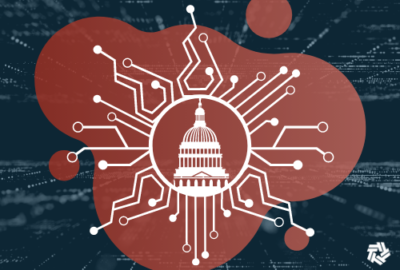GSA earns top marks under FITARA 12 scorecard
House Oversight and Reform Subcommittee on Government Operations released the latest agency grades on progress around IT modernization goals.
Best listening experience is on Chrome, Firefox or Safari. Subscribe to Federal Drive’s daily audio interviews on Apple Podcasts or PodcastOne.
The General Services Administration once again reached the pinnacle of the Federal IT Acquisition Reform Act (FITARA) scorecard. In version 12 of the bi-annual report, the House Oversight and Reform Committee gave GSA an “A+” grade, the only agency to earn the top mark.
This is GSA’s third “A+” grade out of the last four scorecards and only the fourth time an agency received the highest rating since the committee and the Government Accountability Office started measuring FITARA progress in 2015.
Overall, the committee’s grades were similar to scorecards 11 and 10 with agencies mostly receiving “B” and “C” grades.

“Nearly all agencies received a passing grade. Unfortunately for some agencies – and in some categories – progress has slowed,” said Rep. Gerry Connolly (D-Va.), the chairman of the subcommittee and co-author of FITARA. “Despite a few backslides, this scorecard demonstrates continued improvements in many categories. Since the scorecard’s inception in 2015, agencies have made substantial, positive strides in improving their information technology practices. For example, historically, agencies have reported that poor-performing projects are often broadly scoped and aim to deliver functionality several years after initiation. FITARA, however, requires agency CIOs to ensure that IT investments are adequately implementing incremental development practices and that functionality is timely. Since 2015, the portion of agencies’ IT projects implemented incrementally has risen from 58% to 78%. ”
Three other agencies — the departments of Interior and State, and the Social Security Administration — joined GSA with improved scores. Interior and SSA increased a whole letter grade to a “B+,” while State earned a “C” after receiving a “C-” last time.
Two agencies — the departments of Justice and Veterans Affairs — saw their grades drop. Justice fell to a “D+,” which was the lowest score among all agencies, and VA dropped to a “C+” from a “B+.”
Across the subcategories that go into the agency’s final grades, the data center consolidation and optimization initiative — the metrics of which have been a matter of debate for almost a decade — is the one that agencies are most successful in meeting the goals, with 18 earning “A” grades.
Four agencies — SSA and NASA, along with the departments of Defense and Transportation — continue to struggle with the CIO authorities portion of the scorecard. All four received “F” grades, while only under the transition to the Enterprise Infrastructure Solutions (EIS) program initiative did more than one agency receive such a low mark. The committee and GAO added EIS progress to the scorecard in December.
The hearing is the first for Clare Martorana, since she became federal chief information officer in March. Martorana used the time to highlight her four focus areas to help drive IT modernization progress and provide an update on the Technology Modernization Fund as it moves into phase 2.0.

Martorana said the TMF Board received 108 proposals from 43 agencies for projects valued at more than $2.1 billion. This is the first time the Office of Management and Budget has offered this much specificity about agency participation since the fund received $1 billion in the American Rescue Plan Act earlier this year. She said the board is meeting 10 hours a week to review proposals and is bringing in subject matter experts to help.
“I think [the TMF] really represents the market demand for flexible IT modernization funding and our ability to work collaboratively to continue on the IT modernization journey. Most agencies have a pretty significant backlog in their own portfolio for these projects,” she said. “We also, as a board, want to take a top down look to see where we can have the greatest impact across the greatest number of agencies. Take an area like cybersecurity, we don’t start from a blank piece of paper. As any of my fellow CIOs would attest to the same, we are all trying to solve the same problem whether it’s legacy IT or end of life systems or systems that are a little more modern but could benefit from innovation that is going on in the private sector.”
Agencies received the message from the board and OMB that cybersecurity must be a priority. Martorana said 42% of all proposals were asking for money to modernize high priority systems, which includes a cybersecurity component, while 75% of all proposals are focused on improving cybersecurity more broadly.
Lawmakers remain as concerned as ever about agency progress to secure their systems.
Rep. Jody Hice (R-Ga.), ranking member of the subcommittee, asked GAO whether they should create a separate scorecard for cybersecurity.
“Are our systems safe? This is an issue that has come up time and again in hearings — as much as any system can be safe, are our systems safe? In testimony, GAO’s top concern revolves around cyber issues. These are issues we have to deal with. I believe the scorecard needs to hone in on these types of questions. Given the critical nature of the topic, is it enough to have it just be a subcomponent of the broader scorecard, or is it time to figure out a way to shine the spotlight on this area without tipping off the bad guys of our vulnerabilities? I think we have got to address this,” he said. “To have appropriate oversight as it relates to cyber issues, we need some sort of, within this context and this hearing, some sort of scorecard to determine how are we are doing with the cyber issues.”
Carol Harris, the director of IT and cybersecurity at GAO, didn’t say whether she thought it would be a good idea, but committed to working with lawmakers on the concept.

In fact, Hice asked whether the entire FITARA scorecard needs to updated and rethought, changing the focus to how agencies and technology are serving citizens.
“The scorecard needs to reflect this. At the end of the day, the federal government is here to serve the American people. We need to know how effective we are in doing it. How easy is it to access government services and benefits through digital means?” he said.
That focus on citizen services was a key piece of the progress highlighted by Sean Brune, the CIO at the Social Security Administration.
He said SSA is building on the lessons from the pandemic to improve services online and through automation.
“We will continue to use technology to expand streamlined and automated services, which will allow us to provide people multiple service delivery options and to better focus in-office services on those who need to see us in person,” he said in his testimony. “Telephone service has been critical during the pandemic. Between our local offices and our National 800 Number (N8NN), we are on pace to handle over 90 million phone calls in fiscal 2021. Despite the high volume of calls, we have been steadily improving wait times, busy rates and overall service; in fact, through June 2021, our N8NN busy rate for this fiscal year is less than one half of one percent. To improve telephone service, we are working to implement the Next Generation Telephony Project (NGTP). NGTP will replace our three current telephone systems with a single platform. NGTP will provide callers additional information, improve their experience and reduce wait time. It will provide information about expected wait times and scheduled callbacks, and include automated options for inquiries regarding Medicare replacement cards, 1099s and claim status.”
Brune added that SSA also is redesigning its website, SocialSecurity.gov, and it should be ready in 2022.
“In fiscal 2021, we implemented a beta site for SocialSecurity.gov that includes streamlined content and a redesigned home page. We will use customer feedback from online surveys and focus groups to make adjustments to the beta site,” he said. “We expect to increase the customer satisfaction score for the redesigned test sites by two points compared to the ssa.gov satisfaction score for the prior year.”
Copyright © 2025 Federal News Network. All rights reserved. This website is not intended for users located within the European Economic Area.
Jason Miller is executive editor of Federal News Network and directs news coverage on the people, policy and programs of the federal government.
Follow @jmillerWFED






